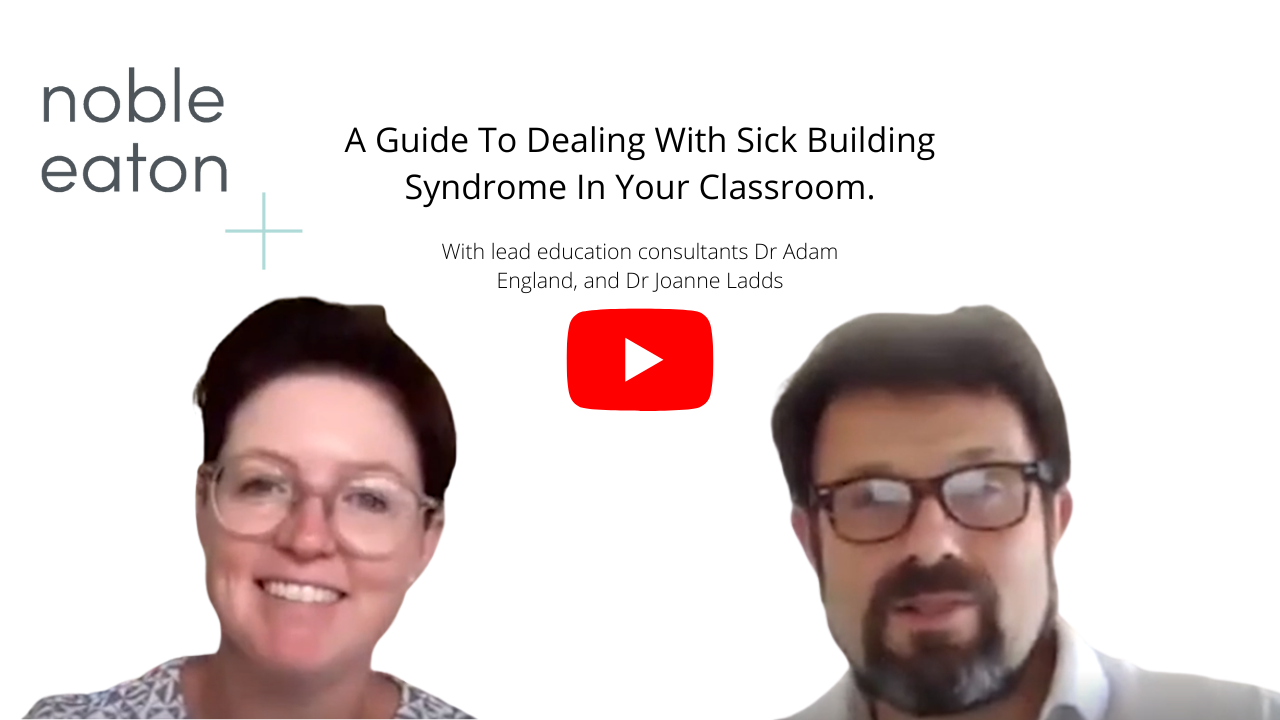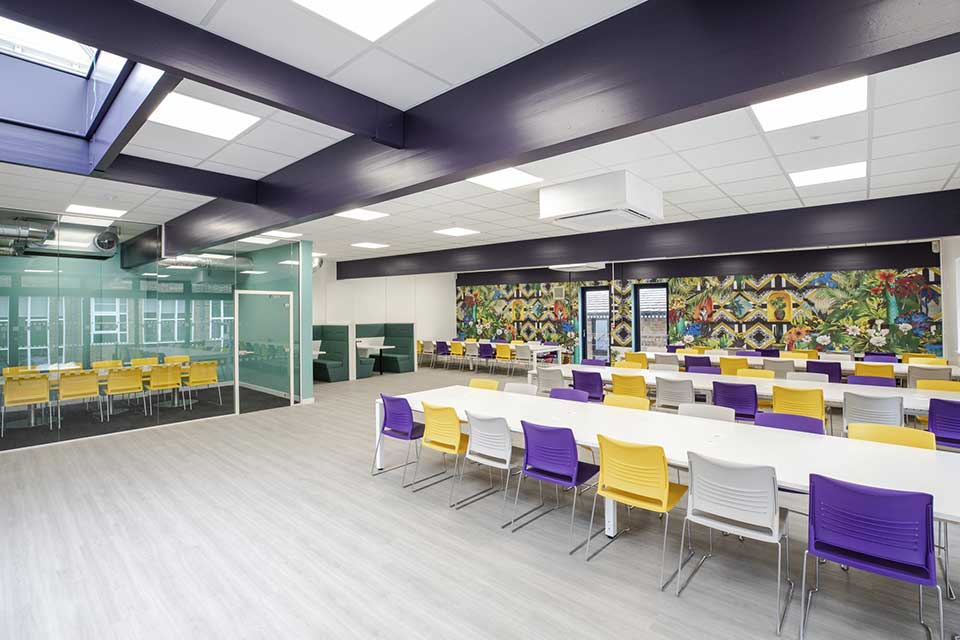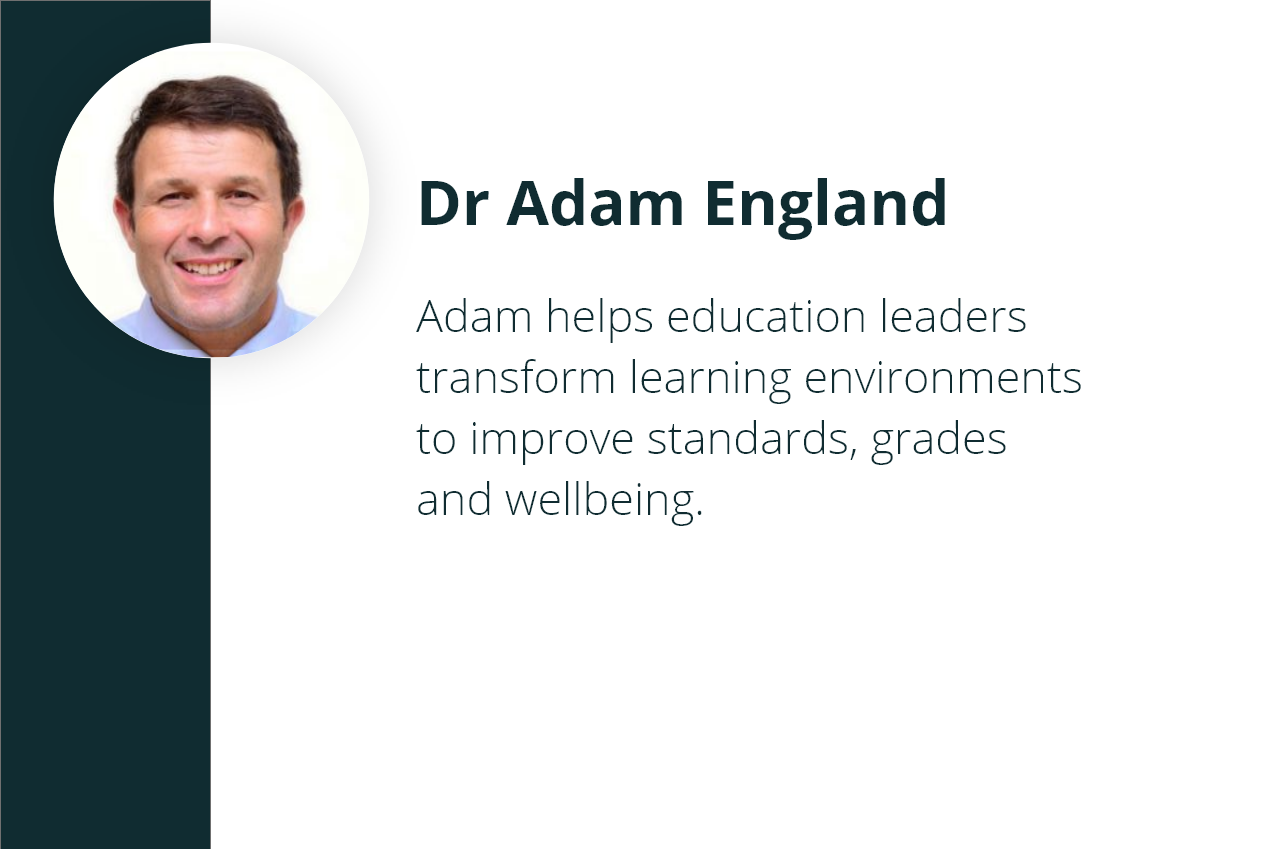A Guide To Dealing With Sick Building Syndrome In Your Classroom

https://youtu.be/Kl4Erxa9StA
Have you ever wondered why in the predominance of UK schools and schools globally, lighting is generally fluorescent?
It’s an interesting question, especially considering the UK health and safety executive’s guidance on lighting at work, which stipulates three conditions:
- The task or job being undertaken should have sufficient light;
- Different colours should be distinguishable to promote safety; and
- No stroboscopic effects, flickers or glare should be caused by the lighting.
In our circumstance, points one and three are most relevant when we consider switching to a task specific culture. This is because many tasks in schools are not completed in sufficient light. Sufficient in this context means bright enough. However, we can flip that a little bit and say that sufficient light should also mean light that is appropriate for the type of learning that is taking place and with the type of learners doing the learning.
For a moment, let’s hold on to that thought and look at point three; the light should not cause any stroboscopic effects, flickering, or glare. Of course, this happens all the time. Biofluorescent lighting is stroboscopic. There is a tsunami of neurodivergent learners coming down the track; in the independent sector in the UK alone, about 20% of learners are ADHD or similar. Yet, we lack environments that will make learning easier. In fact, we have environments lit in such a way that they will aggravate many of the conditions associated with neurodiversity.
Why in light of this government guidance do we still have inadequate lighting in schools?
Well, it’s the same in all the schools we’ve visited. There is fluorescent lighting in corridors and classrooms that reflects off whiteboards, making it impossible for students to see what is going on. People may have tried to counteract this by putting in blinds and turning off all the lights so that students can see the demonstration. Quite often, there are also lights that aren’t working properly and flicker on and off. So that makes it even more problematic.
However, it is starting to change because people are starting to think about it from a different angle, not from the neurodiversity angle but they’re thinking about it from a money saving angle. They’re thinking, well, these are costing a lot of money, I better replace them with LEDs. And that’s the thing that we see changing, not the actual thought process that we’re discussing here as to why it is important to change this lighting for the actual learning that’s taking place.
Another thing to consider is the use of devices. Instead of the students just looking at large screens where the teachers display work, you’ll find that students could be using their own devices. This then changes the lighting that you need because of the glare that you’re getting from the screen. Now, yes, we can change the filters on a device so that it is bespoke for a student but how many students and teachers know how to do that? Some students may even wear different-coloured glasses or use a piece of coloured filter paper over their screen to try and help. So, if we’re being learner centred, why are we not considering the lighting for our students instead of forcing students to do these odd little things themselves so they can access the work?
The UK’s health and safety executive has legislated for sick building syndrome since the mid-1990s, so nearly thirty years ago, it was noticed that people could have nausea sickness, fatigue, and other issues due to the lack of ventilation and adequate lighting in the workplace, so the HSE legislated and put in place a series of standards which hold the British Standards Association Kitemark. The corollary to our first point is that we know it is happening, we know it is legislated for in the commercial sector. Therefore, why does the same legislation not apply to the education sector?
It’s a good question. However, even if it isn’t legislated for, we can still act now because we are aware of it. We can ask these questions, gather data and information, and decide to do something about it because we know that that will impact learners’ attitudes towards learning. In addition to the progress we can make, we need to consider their attainment and behaviour at the end of the day.
Why don’t we just start doing something about it now if it will affect all these things?
I guess a lot of teachers and leadership teams would say, well, that’s going to cost a lot of money. That’s not necessarily the case. You could, if you wanted to, have a wholesale switch to using LEDs, or if it is an issue and with some judicious timetable, perhaps in the brighter classrooms that are more naturally lit you simply turn the lights off and have natural lighting and open the windows. I’m a great believer in pragmatic solutions to difficult problems and I have no doubt that if we adopted a pragmatic approach, we would probably improve the well-being of a significant number of children.
We need to change mindsets, build awareness, and work on what can be done pragmatically right now. Schools should be auditing their classrooms at the start of every year before students enter that space. It would probably be helpful for estate managers to update their audits so that there is a bit more detail available, and separating out light and sound would be a good place to start.
If you began with something as basic as the health and safety executive’s documentation on how to deal with sick building syndrome, which effectively gives you a mandate for what is acceptable and what is not, and audited your building on the back of it, it would generate a timeline and a set of actions that costs nothing other than the time given by the estates managers and the bursars. It is clear that fluorescent lighting will be a more expensive option for lighting the school. So eventually, once you work out a change program, you get to a point where you’re saving money as well as the space being more fit for purpose.
Looking at some of the identifying factors of sick building syndrome, you can almost put together a checklist for your students and teachers because it asks: Do you have dry or achy skin? Dry or itchy eyes, nose or throat? Headaches? Lethargy? Irritability? Stuffy or runny nose? Staff efficiency? Increased absenteeism and staff turnover? Extended breaks and lost time? Complaints? These all apply almost uniformly to schools with learning environments that do not promote well-being.
Post-COVID and post-remote learning, the classroom and environment have been given more attention than before. You’ve actually got a springboard because windows were asked to be opened, doors remained open, and spaces were used in different ways. When children remained in one classroom and teachers moved around, students’ behavior was worse because they weren’t able to stand up and move around as they had before. Maybe the lighting in that room wasn’t fantastic. However, for another group of students across the hallway, whether the lighting was different, their behaviour was far better because they were timetabled in that classroom. we’ve gone through a period where we asked for more ventilation, let’s use this as a springboard to go that one step further.
The HSE has specific guidelines regarding office design, soft furnishings, lighting, air conditioning, etc. In schools, why don’t users have control over these features?
We have provided these spaces for learners to be in, but we are not actually considering the space that they are in at all. The HSE strongly criticizes open plan offices and lack of personal control over working conditions, yet students have little to no control over their working conditions in schools. It’s legislated for in the commercial sector for adults, but for those under sixteen and in school, it seems impossible. This should then apply to the teachers, since the teacher is at their place of work. So the same legislation should apply!
The planning and management of schools must comply with the published standards in the building regulations and move toward the best possible working environment as cost-effectively as possible. We could ask any senior leadership team to adopt that mindset which would truly result in far greater engagement and standards.
I recommend doing an audit of your classroom at the end of August as you return to school with fresh eyes. What kind of lighting do you find in your classroom when you first enter it in the morning? How does it change by lunchtime, and then again at the end of the day? Is that lighting fit for the learning that you are trying to achieve within that space?
Don’t forget – we really want to hear about your experiences. It’s only by sharing and talking about these experiences and explorations that we will find the optimal combinations to support the broadest range of learners possible.
So please, join our Design Thinkers’ group, share your experiences, talk to us about the iterative facets of what it is you have done and above all else, please remember that by doing that, that is how we will incorporate Design Thinking as an embodiment of successful thinking in schools across the UK and beyond.




